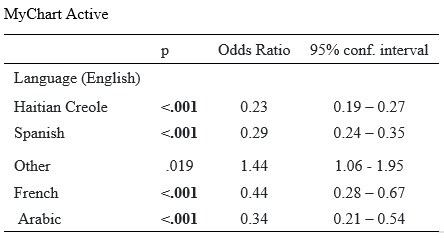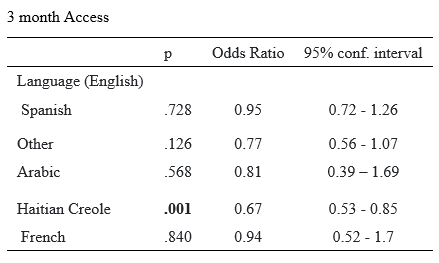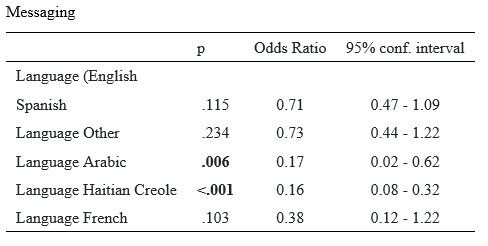Health Equity/Social Determinants of Health 4
Session: Health Equity/Social Determinants of Health 4
704 - Preferred Language Disparities in Patient Portal Activation and Engagement in Children
Sunday, April 27, 2025
8:30am - 10:45am HST
Publication Number: 704.6178
Hal Sitt, NYC Health+Hospitals/Kings County, Brooklyn, NY, United States; Paridhi Anand, NYC Health+Hospitals/Kings County, Brooklyn, NY, United States; Lee M. Waldman, State University of New York Downstate Medical Center College of Medicine, Brooklyn, NY, United States; Ninad Desai, NYC H+H/ Kings County and SUNY DHSU, Brooklyn, NY, United States
- HS
Hal Sitt, MD (he/him/his)
Primary Care Physician
NYC Health+Hospitals/Kings County
Brooklyn, New York, United States
Presenting Author(s)
Background: Patient portals have become a cornerstone of pediatric primary care delivery and have been linked to improved patient satisfaction, co-ordination of care and health care delivery. Despite documented benefits, significant disparities exist in the activation of and engagement with patient portals on the basis of socio-economic demographic factors. Differences in patient portal engagement by parent’s preferred language has not been studied in the primary care setting.
Objective: Compare patient portal activation and engagement rates by proxies of 0–11 year-olds by preferred language at a primary care practice in an inner-city hospital.
Design/Methods: We analyzed electronic health record data for patients seen from October 2023 to October 2024 in the pediatric primary care department of a large urban medical center. We summarized portal activation rates, portal access rates in last 3 months and outgoing portal messaging rates in last 6 months.
Results: Among 7,210 unique and active pediatric patients ages 0-11 years, English speaking patients had a higher rate of portal activation with an odds ratio of 3.465 (p value < 0.001) compared to all other languages. This was primarily driven by comparison with Creole, Spanish, French and Arabic speakers with odds ratios of 0.23, 0.29, 0.44 and 0.34 respectively ( p values < 0.001). Among the portal-activated slice of this cohort, Creole speaking patients were significantly less likely compared to English speakers to have accessed the portal in the last 3 months with an odds ratio of 0.67 (p value < 0.001). Furthermore, within the same portal activated slice, Creole speaking patients were significantly less likely to send a message within the last 6 months with an odds ratio of 0.16 (p value < 0.001).
Conclusion(s): Our findings demonstrate that significant disparities exist in both portal activation and portal engagement rates based on preferred language. Patient portals and other digital health initiatives are essential to the future of healthcare delivery. However, without a focused effort to investigate and address socioeconomic disparities and promote healthcare equity in digital health, a significant number of patients may be left behind. Further studies could investigate the barriers to more equitable patient portal access and engagement.
Portal Activation by Preferred Language

Portal Access in last 3 Months by Preferred Language

Sent Portal Message in last 6 Months by Preferred Language

Portal Activation by Preferred Language

Portal Access in last 3 Months by Preferred Language

Sent Portal Message in last 6 Months by Preferred Language


